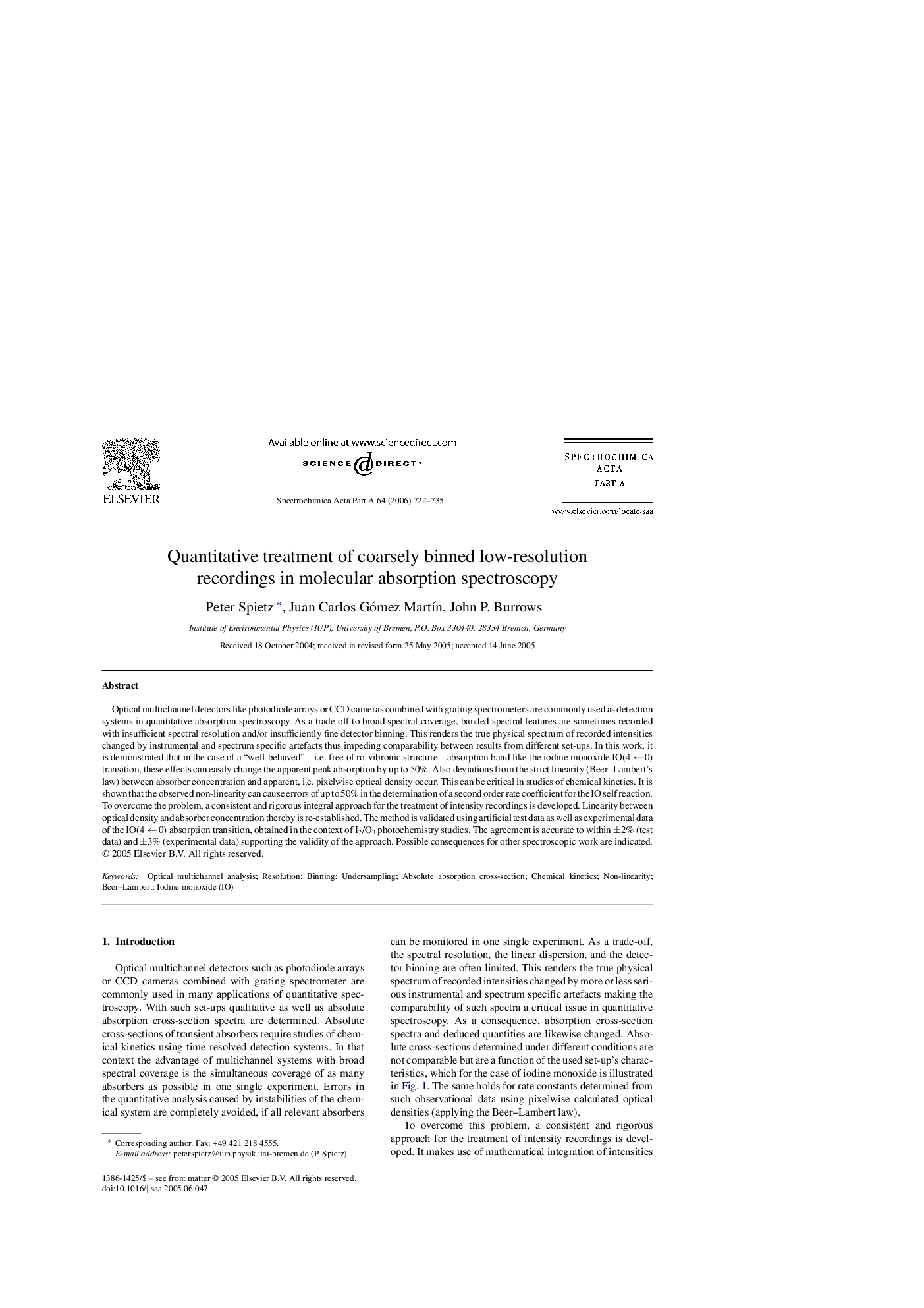| Article ID | Journal | Published Year | Pages | File Type |
|---|---|---|---|---|
| 1236438 | Spectrochimica Acta Part A: Molecular and Biomolecular Spectroscopy | 2006 | 14 Pages |
Optical multichannel detectors like photodiode arrays or CCD cameras combined with grating spectrometers are commonly used as detection systems in quantitative absorption spectroscopy. As a trade-off to broad spectral coverage, banded spectral features are sometimes recorded with insufficient spectral resolution and/or insufficiently fine detector binning. This renders the true physical spectrum of recorded intensities changed by instrumental and spectrum specific artefacts thus impeding comparability between results from different set-ups. In this work, it is demonstrated that in the case of a “well-behaved” – i.e. free of ro-vibronic structure – absorption band like the iodine monoxide IO(4 ← 0) transition, these effects can easily change the apparent peak absorption by up to 50%. Also deviations from the strict linearity (Beer–Lambert's law) between absorber concentration and apparent, i.e. pixelwise optical density occur. This can be critical in studies of chemical kinetics. It is shown that the observed non-linearity can cause errors of up to 50% in the determination of a second order rate coefficient for the IO self reaction. To overcome the problem, a consistent and rigorous integral approach for the treatment of intensity recordings is developed. Linearity between optical density and absorber concentration thereby is re-established. The method is validated using artificial test data as well as experimental data of the IO(4 ← 0) absorption transition, obtained in the context of I2/O3 photochemistry studies. The agreement is accurate to within ±2% (test data) and ±3% (experimental data) supporting the validity of the approach. Possible consequences for other spectroscopic work are indicated.
